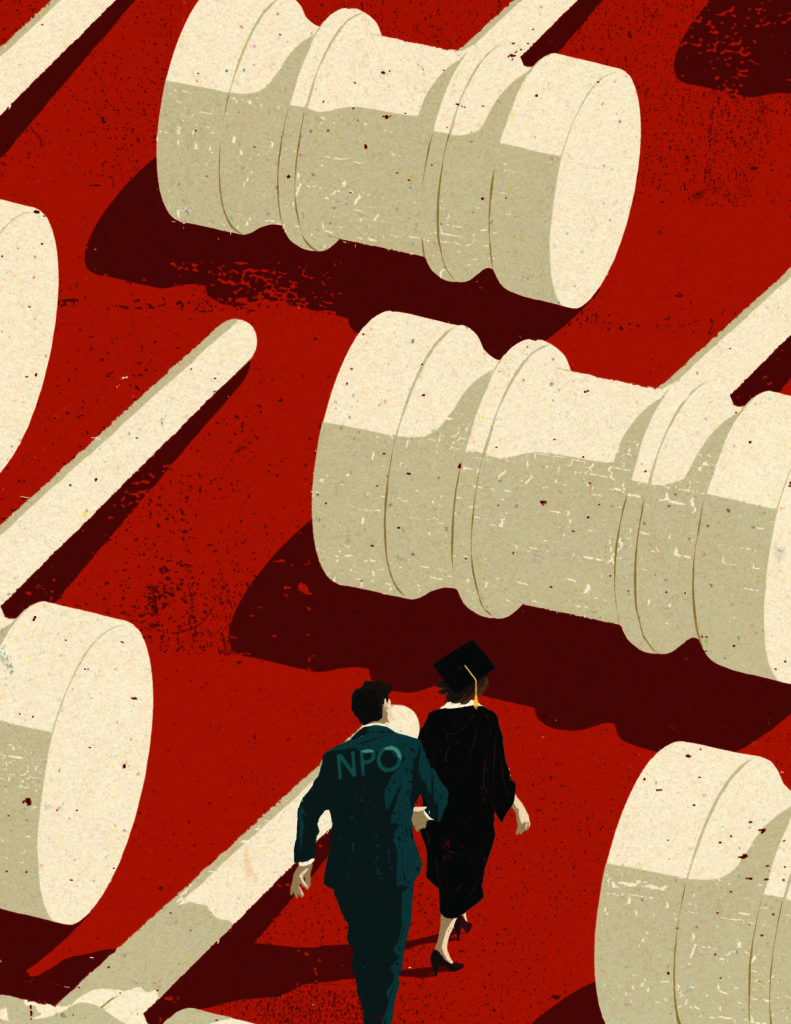Organizations and Transactions Clinic: Demystifying Corporate Practice One Document at a Time

Fashion Incubator San Francisco (FiSF) was transitioning to a full business accelerator model. And the handbook FiSF gave To emerging fashion designers, whom it mentors and provides studio and showroom space, needed a thorough update. A professional review was in order. • Enter the Organizations and Transactions Clinic. Under the direction of Professor Jay A. Mitchell (BA ’80) who is assisted by Michelle Sonu, a clinical supervising attorney and lecturer in law, the clinic not only provides service to its clients but also prepares Stanford Law students to deal effectively with legal documents and to think about their real-world use by clients.
“I’m not saying that students will love documents by the end of the quarter,” says Mitchell, “but I do believe they will find them less daunting. And I think they will have an understanding and, I hope, appreciation of the multiple dimensions of legal documents and what it takes to produce quality work.”
Nicole Scott, JD ’16, was on the team that tackled the FiSF handbook and says it was a great experience. “We met with the head of the organization to discuss the obligations that each party had, visited the physical space to assess potential liabilities, and reviewed the lease. Then the whole clinic brainstormed what should be included in the handbook.”
Because O&T operates within the larger public interest framework of the Mills Legal Clinic, it focuses on representation of established nonprofit corporations.
“We’ve represented large organizations such as Goodwill, KIPP, and Second Harvest Food Bank, as well as newer nonprofits such as FiSF. These clients generate projects directly relevant to big firm corporate practice, and the work exposes students to a wide range of subject matters and materials,” says Mitchell.
Each O&T team gets a mix of four projects per quarter and is supervised by Mitchell or Sonu, both of whom have extensive experience in corporate practice. While advisory projects often involve big-picture topics such as geographic expansion models, merger planning, and intellectual property protection, the staple of the clinic’s practice is working with legal documents. For example, every team performs a corporate governance review, a comprehensive review and update of bylaws, committee charters, governance policies, and board operations.
Such engagements are great preparation for practice, says Mitchell. “It’s easy to use them as a springboard for talking about governance in a public company, or preparing a company for sale.”
Teams also work on a wide variety of non-governance materials. These include license, loan, and other contracts, program documents such as rules for farmers markets and arts education programs, and a variety of summaries, checklists, talking points, and other materials for everyday management use.
“Oftentimes, our clients are using homemade documents or something that may not have changed over time in line with changes in their underlying program or operations,” Mitchell says. “We want to tailor them to fit the organization’s needs.”
The students take the lead in generating drafts. “We pore over everything the students produce and closely edit their work,” Sonu says. But turnabout is fair play. “Jay and I also work on client matters and regularly have students mark up our drafts.”
KJ Pedersen, JD ’16, says that this feedback, along with the drafting, was the most valuable thing about his clinic experience. Pedersen also appreciated the client contact: “We interfaced with clients via email, telephone and, most significantly, in person,” he says. “Being able to speak directly with and present to board members—comprising successful individuals in their respective fields—taught me quite a bit about composing myself professionally and effectively.”
The clinic’s approach to documents emphasizes not only legal functionality but also practical implementation. “How can we make this document better reflect reality on the ground? How can we make this deliverable easier for the client?” Mitchell asks. “We want students to think about everything from design to language to cheat sheets to emails.”
This aspect of the clinic really resonated with Scott. “I’m a visual thinker and Jay and Michelle emphasized drawing things out to visualize how to make a deliverable not only more functional and accessible but also beautiful,” she says.
Importantly, the FiSF team wanted to ensure that the designers would actually engage with the materials. “We made it user-friendly by making it visually appealing and calling out the main takeaways,” she says. Scott, who is headed to a Los
Angeles firm to do transactional work, says the clinic was one of the most useful things she did in law school.
But beyond demystifying the nuts and bolts of corporate practice, the clinic provides students with something less tangible and perhaps equally valuable: an appreciation for the broad applicability of the corporate skill set. As Scott observes, “O&T made me realize that the variety of nonprofits is huge and that I can help the world and still do corporate work.” SL
